48 hours in Yosemite: How to see the park’s many wonders on a weekend trip
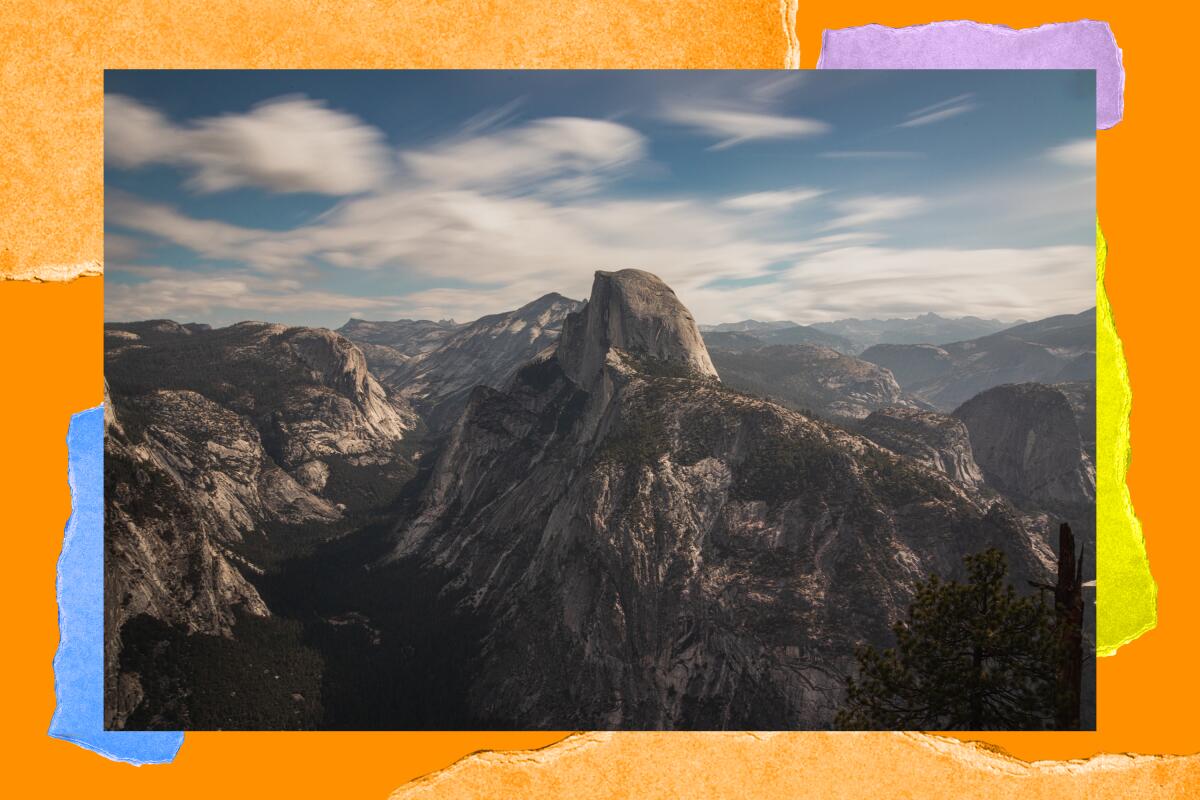
Last weekend, I ventured to our state’s most-visited national park — Yosemite — for a whirlwind 48-hour tour. Turns out, there’s a lot you can do and see in the land of the Ahwahneechee over a couple days.
Saturday is National Public Lands Day, the nation’s largest single-day volunteer event for public lands. It’s also one of only five days in the year that entrance fees are waived at national parks, meaning it’s the perfect time to visit and volunteer.
Get The Wild newsletter.
The essential weekly guide to enjoying the outdoors in Southern California. Insider tips on the best of our beaches, trails, parks, deserts, forests and mountains.
You may occasionally receive promotional content from the Los Angeles Times.
“If you want to meet people, come to Yosemite,” says Ken Yager, founder of Yosemite Facelift, Yosemite Valley’s largest clean-up event, happening now through Sunday. “Everyone comes to Yosemite. And for good reason.”
Here’s my suggested itinerary, if you decide to make a quick weekend trip to see Yosemite’s wonders. Note: If you’re visiting prior to Sept. 30, you’ll need park reservations during peak hours. But booking a spot in Yosemite Valley (I recommend Housekeeping Camp) allows you to enter the park automatically. Also, although Half Dome is certainly a bucket-list hike, I nixed it on this itinerary because of the challenge of getting a permit.
Day 1, Friday
3 p.m.: Arrive at Mariposa Grove of Giant Sequoias. Enter the park via the south entrance off California Highway 41 to reach a beautiful pitstop on your way to the valley. Reopened in early August after a fire scare, Mariposa Grove is home to 500 giant sequoias and a few hiking loops. Opt for the gentle two-mile Grizzly Giant Loop Trail, which features notable arbors like the 3,000-year-old namesake tree and the photo-friendly California Tunnel Tree.
6:30 p.m.: Check out Tunnel View. The overlook provides one of the most iconic views within any national park, and it’s best experienced at sunset. That golden-hour lighting showcases the sheer granite cliffs of El Capitan and Half Dome over the Yosemite Valley.
8 p.m.: Picnic at El Capitan Meadow. If you’re staying overnight in the valley, check in, grab some food at your spot (I always bring my own grub, but there are also plenty of dining options) and head straight for El Capitan Meadow. It’s a fabulous nighttime picnic spot — you’ll see the dim glow of climbers scaling El Capitan’s massive rock face under the stars and Milky Way.
Day 2, Saturday
6 a.m.: Hike the Four Mile Trail to Glacier Point. With Glacier Point Road closed for the remainder of 2022, the only way to get to the epic Glacier Point overlook is via a 4.8-mile trail that gains 3,200 feet from the valley floor. The 9.6-mile roundtrip is strenuous and will take six to eight hours with rest stops, so plan accordingly. The good news? Due to the road closures, you will be one of the few hikers at this usually crowded spot, which is an incredible gift. Leave early to beat the heat and enjoy the sunrise as you grind up the switchbacks. Pro tip: Don’t forget to look down — the vistas of the valley and granite formations are truly jaw-dropping.
1 p.m.: Hike to Vernal Fall. If you’re looking for lunch, a tasty and efficient spot is Curry Village Pizza Deck, which has solid pies, local brews and views of Half Dome (just watch out for the voyeuristic crows and opportunistic squirrels!). Plus, your next venture is on the Mist Trail from nearby Happy Isles for a quick 1.6-mile roundtrip visit to Vernal Fall. It’s a nice cooldown hike after your morning workout and offers easy access to year-round falls (unlike the grandiose Yosemite Falls, which dry up in fall).
4 p.m.: Learn some history at Yosemite Valley Visitor Center. Every national park visit requires a stop at the visitor center to learn about the park’s history and main features. Here, you can check out the Yosemite Village as well (I like the restored post office and the Miwok village), but the real secret is Yosemite Conservancy’s free bike share program. Download the app and grab a pair of wheels here for your evening exploration. Note: If you’re driving, consider a stop at the Ahwahnee hotel, commissioned in the 1920s, to wander the grounds and enjoy the stunning architecture.
5 p.m.: Ride through nature on a Yosemite Valley bike tour. After plenty of walking, spend your final hours of sunlight on a 12-mile bike ride along paved paths in Yosemite Valley. Even in fall when the cascade is a mere trickle, it’s worth a short pit stop at the very accessible Yosemite Falls. Otherwise, wander through the valley and alongside the Merced River as you enjoy different perspectives of the surrounding granite monoliths.
Day 3, Sunday
6 a.m. Drive up the picturesque Tioga Road. While your feet are recovering from yesterday’s mileage, take a leisurely (and extremely picturesque) drive up Tioga Road. Along the 45 miles to serene Tenaya Lake, snap photos at the many viewpoints, but especially at Olmsted Point, which has a less-visited but very cool perspective on Half Dome. Have breakfast or lunch alongside the blue waters of Yosemite’s largest lake, named for the last chief of the Yosemite Indigenous people, before heading back toward the valley.
3 p.m.: Cap off your trip with a visit to Yosemite Climbing Museum in Mariposa. As a last stop, visit the charming historical town of Mariposa to check out the long-overdue Yosemite Climbing Museum, which opened in 2021. It’s a fitting tribute to Yosemite’s storied climbing history and was carefully curated by Ken Yager (who has climbed El Capitan more than 60 times). He’s often there, so ask for him. Hearing his stories gave me a new appreciation for Yosemite, a place I can’t wait to return to.
5 things to do this week
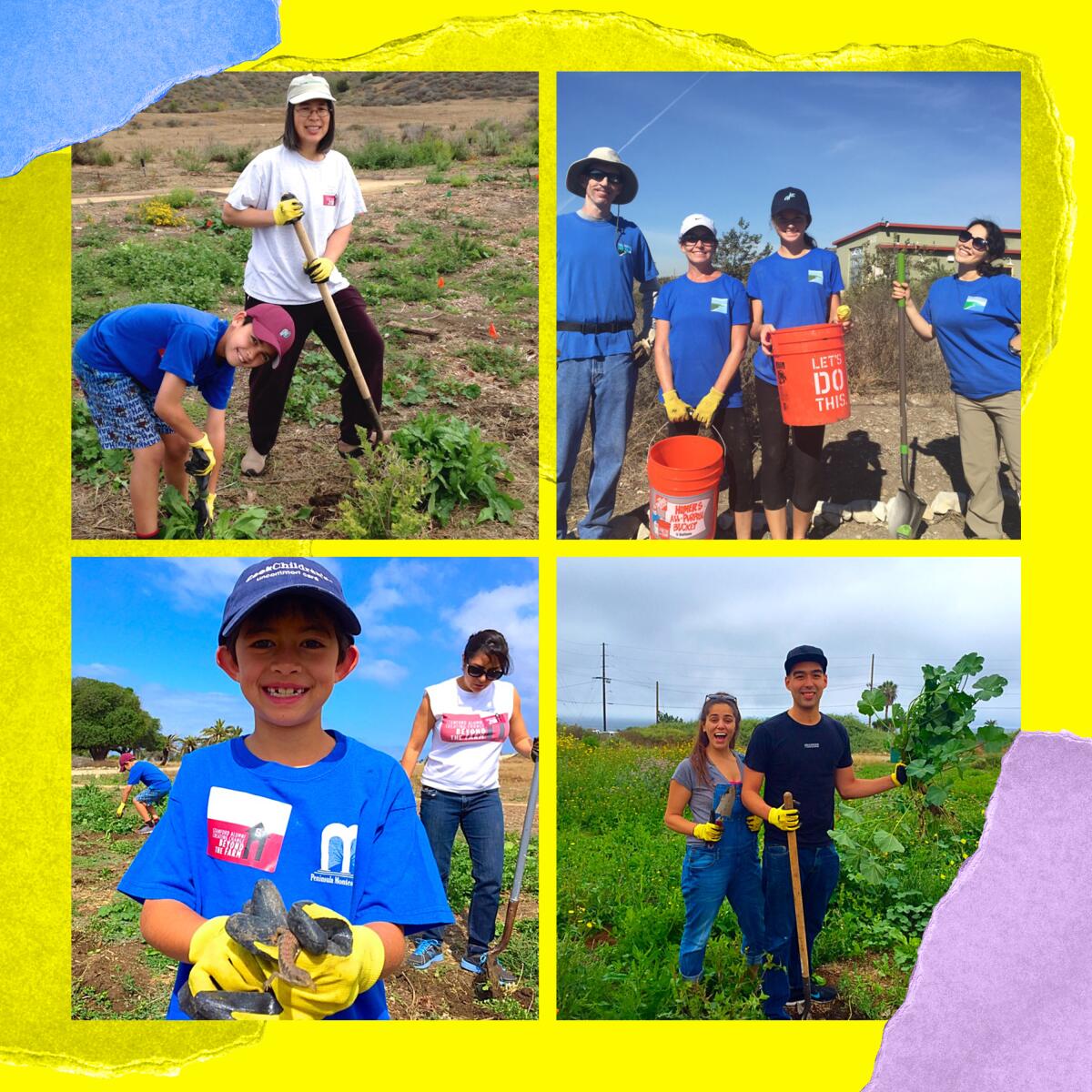
1. Support a native plant garden at White Point Preserve in Ranchos Palos Verdes. Celebrate National Public Lands Day on the coast with the Palos Verdes Peninsula Land Conservancy, which recently initiated a 96-acre wildlife corridor conservation effort. From 9 a.m. to noon on Saturday, volunteer at the beautiful White Point Preserve Native Plant Demonstration Garden. You’ll help with weeding, watering, mulching and more. Register here.
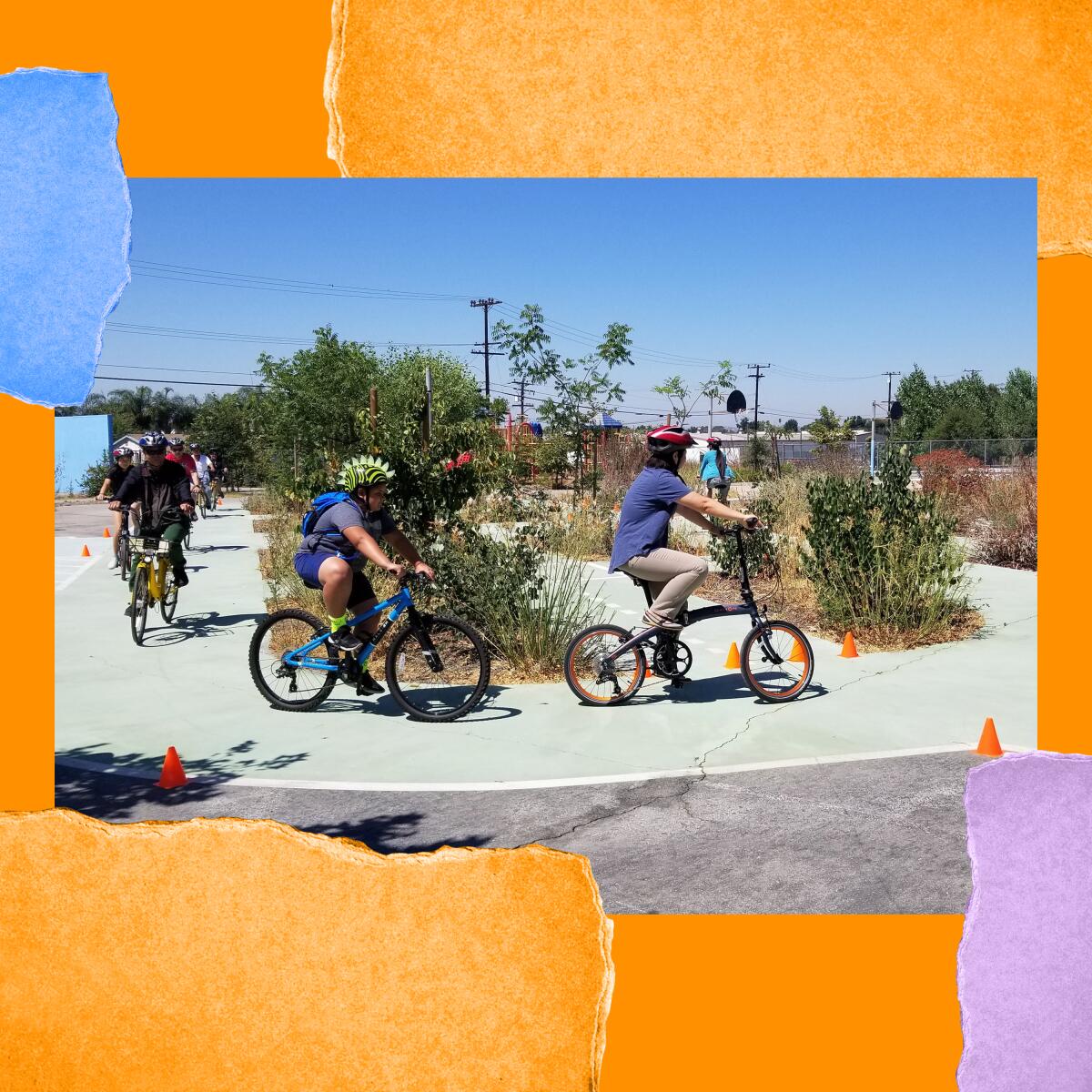
2. Learn to bike with Metro and ActiveSGV in El Monte. Metro’s Bicycle Education Safety Training (BEST) program wants people to know it’s never too late to learn how to ride a bike. On Saturday from 9 to 11 a.m., take a cycling class aimed at “empowering communities to use the bike as a means of transportation.” You can reserve a rental bike for free (and also take home a free helmet and set of bike lights), but registration is required .
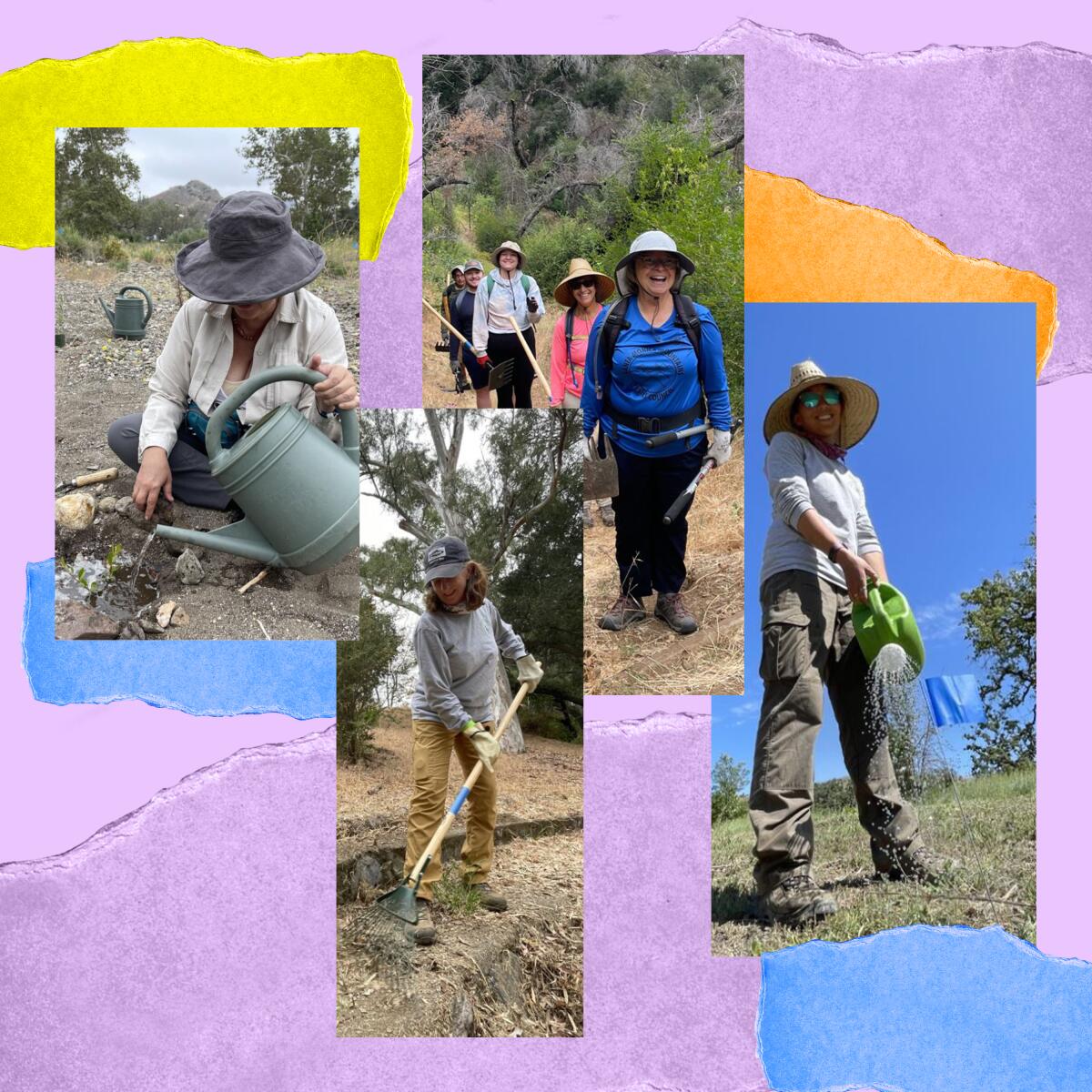
3. Improve the trails and plant natives with the National Park Service in the Santa Monica Mountains. Visit L.A.’s closest national recreation area on Saturday from 8 a.m. to 12 p.m. for a National Public Lands Day habitat restoration project. In addition to trail improvement and native habitat restoration, participants will “clear vegetation to protect the park during fire season” and improve conditions for park horses at Rancho Sierra Vista. Attendees will be provided lunch and a free national park entrance ticket (which can be used at any national park). Register here. Want more? Join a gourd workshop with a Cherokee gourd artist on Sunday at the nearby Satwiwa Native American Indian Cultural Center.
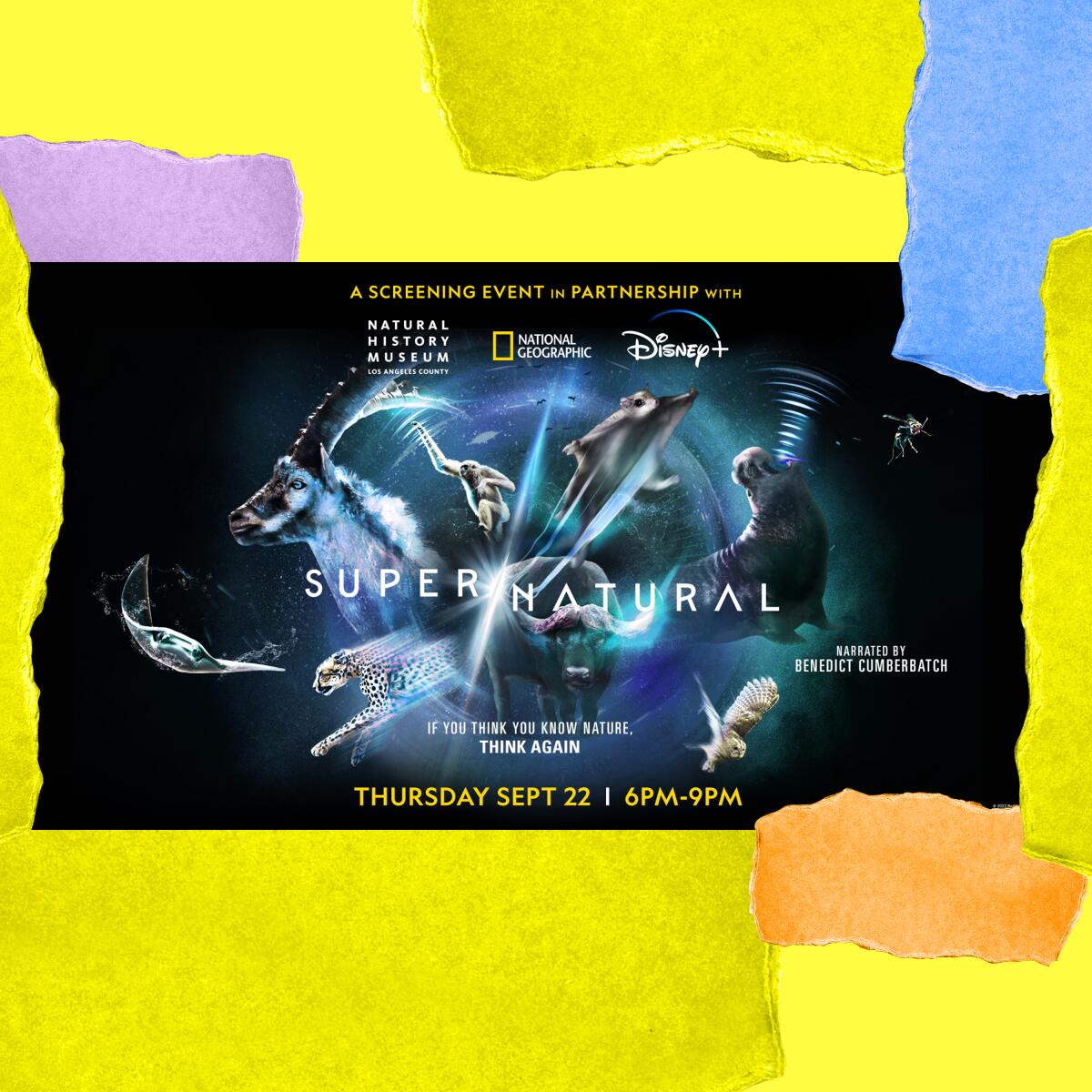
4. Enjoy a nature documentary screening at the Natural History Museum. On Thursday from 6 to 9 p.m. celebrate the last night of summer with an outdoor screening of “Super/Natural” at NHM’s Nature Gardens (registration required) in partnership with National Geographic and Disney+. In addition to a sneak peek of the show’s first episode, guests can visit the museum’s collections, try hands-on activities and interact with animals in the Nature Lab.
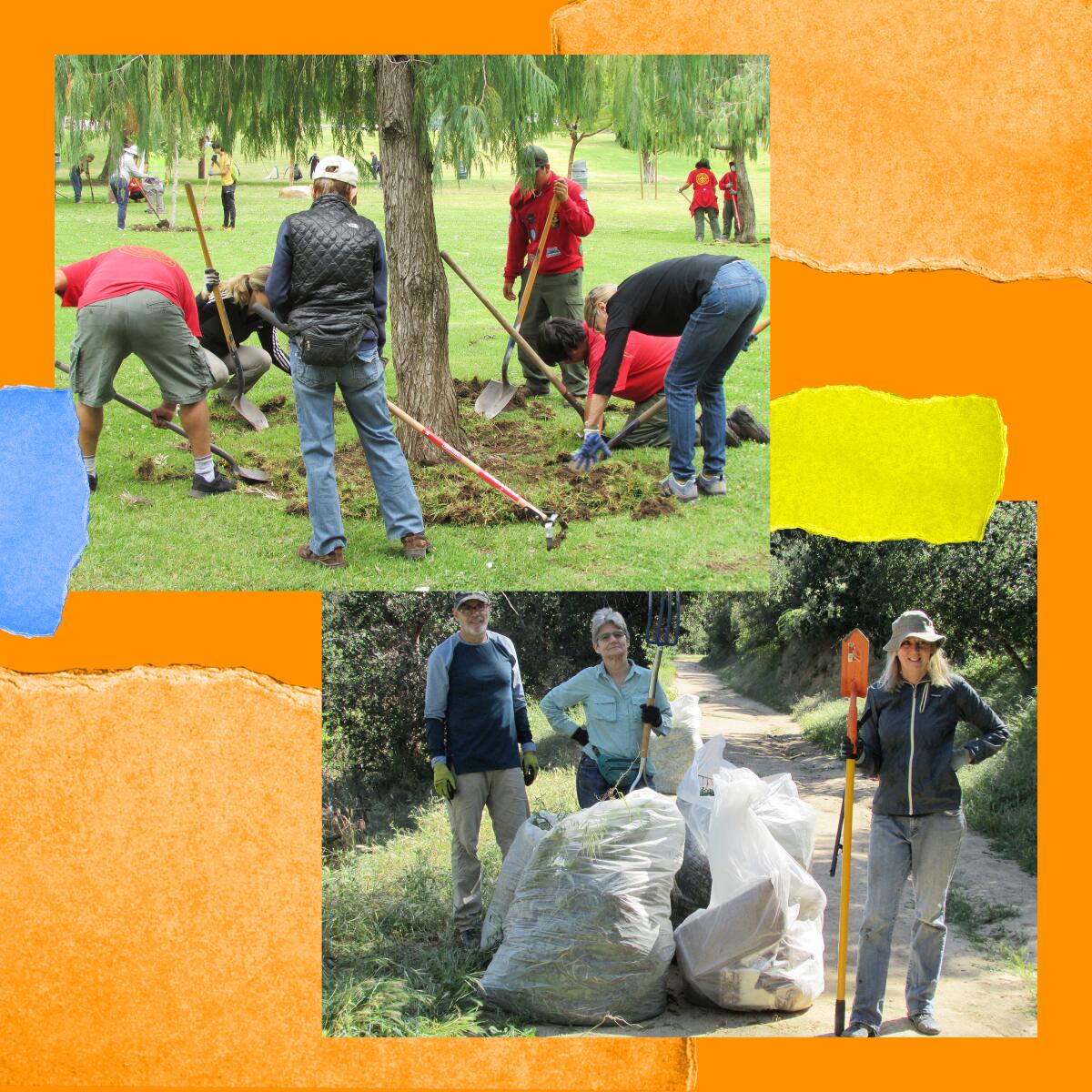
5. Get your hands dirty and help clean Griffith Park. On Saturday another event salutes National Public Lands Day. From 8:30 to 11 a.m., Friends of Griffith Park is hosting a volunteer event to care for our largest urban green space. Complete a volunteer agreement form and meet at the flagpole near the merry-go-round lots. Gloves, hand tools and water will be provided.
Check out “The Times” podcast for essential news and more.
These days, waking up to current events can be, well, daunting. If you’re seeking a more balanced news diet, “The Times” podcast is for you. Gustavo Arellano, along with a diverse set of reporters from the award-winning L.A. Times newsroom, delivers the most interesting stories from the Los Angeles Times every Monday, Wednesday and Friday. Listen and subscribe wherever you get your podcasts.
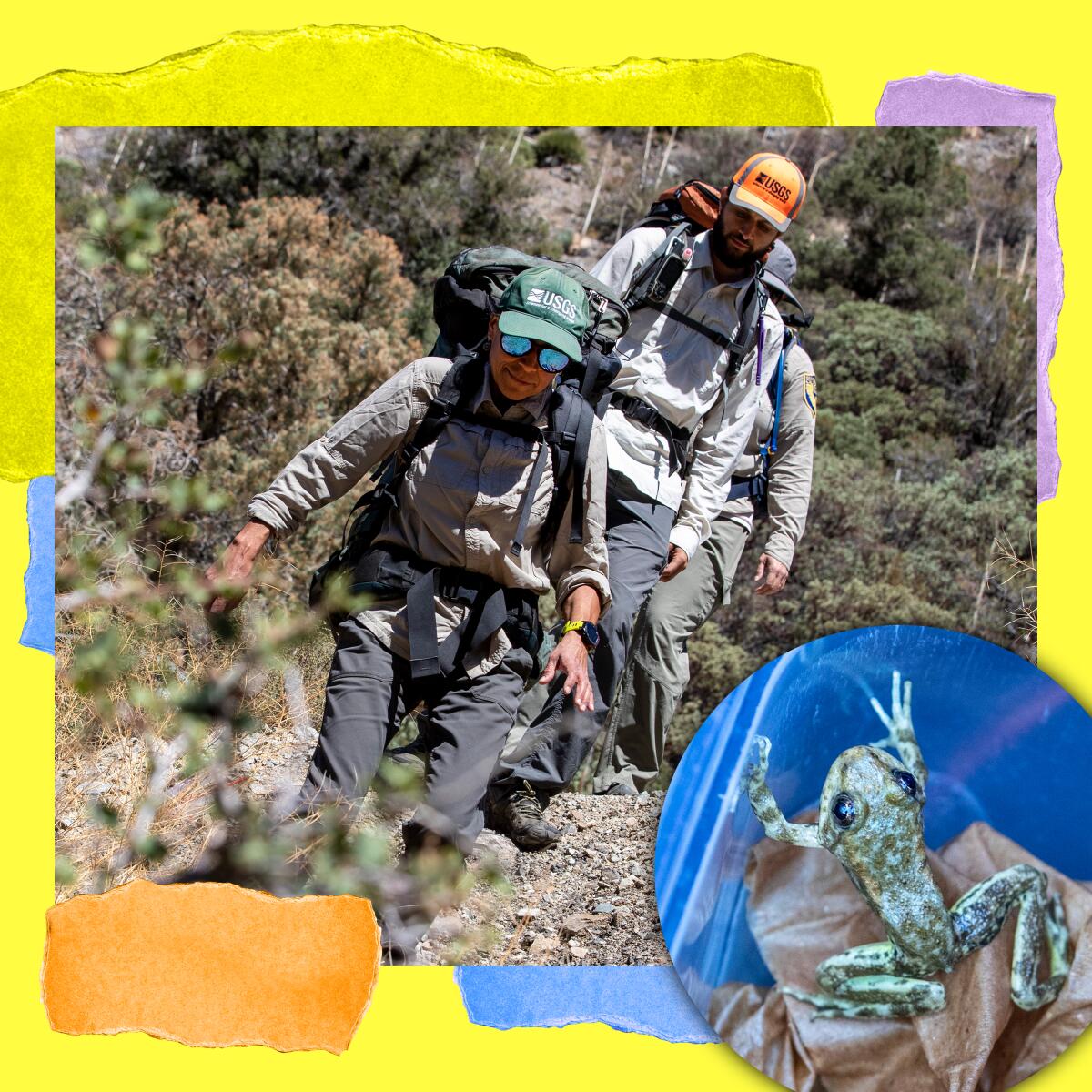
Wild things
One small three-mile trek for biologists, one giant leap for frogkind. Last week, six U.S. Geological Survey scientists carried 200 yellow-legged frogs to a pair of remote streams in the northwestern San Gabriels, reports Times writer Louis Sahagún. The tiny amphibians once thrived in the mountains, but they’ve recently experienced huge decline because of human recreation and “climate-driven heat waves.” The good news? The recent release of 175 froglets from the Aquarium of the Pacific and 25 from the Santa Ana Zoo effectively doubled the number of wild yellow-legged frogs in the Angeles National Forest. Now, we just have to wait and see if they thrive in their new habitat.
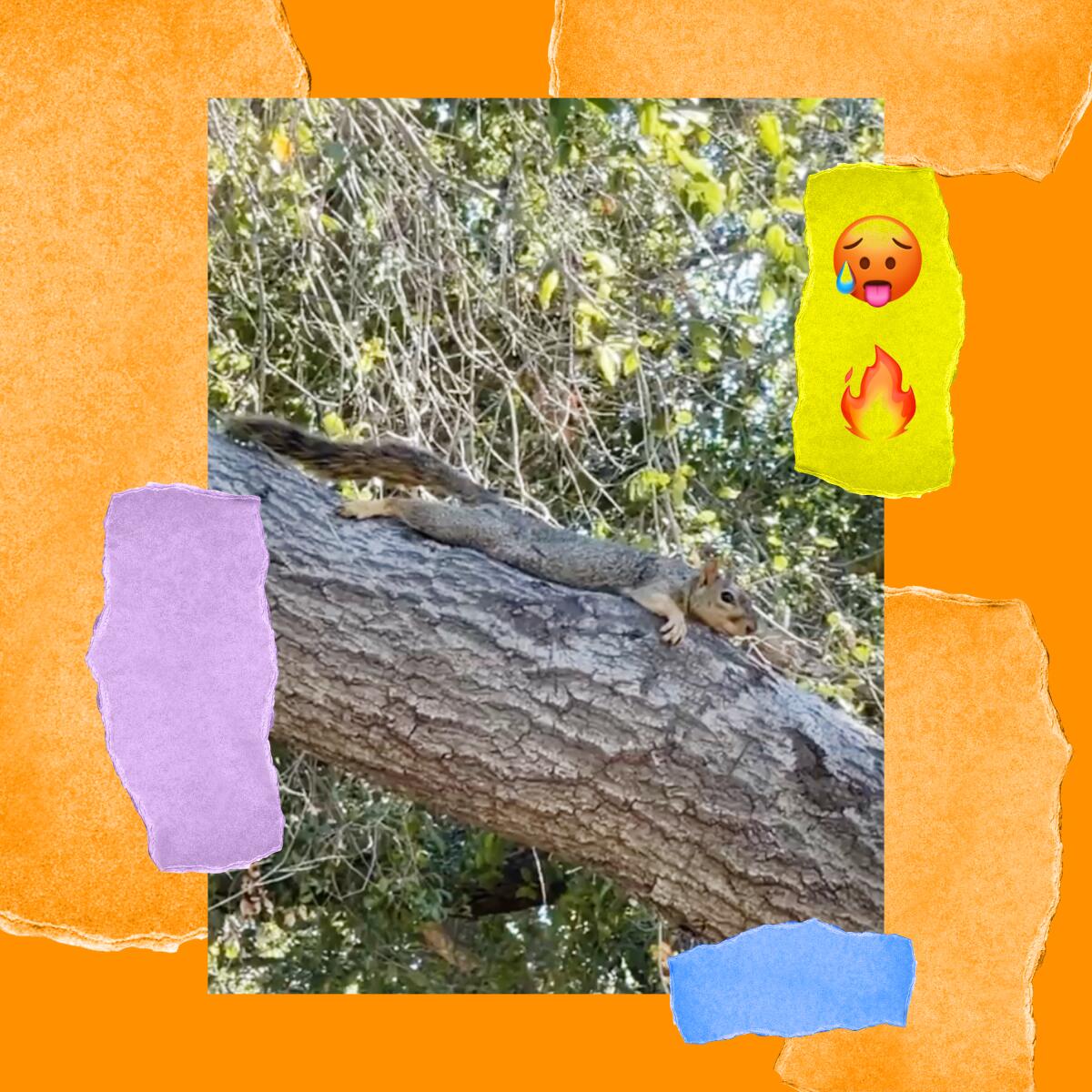
The red flag
The latest big heat wave may be over, but we can still expect some seriously warm days in the first weeks of fall. While the human residents of L.A. may simply seek shade or air conditioning, local animals have to get creative. Enter “splooting,” a strange heat-shedding behavior Times writer Grace Toohey reports is completely normal. Also called “heat dumping,” splooting is a term (of unknown origin) used for the spread-eagle position that animals, like squirrels and dogs, use to cool quickly via sprawling out. Although it is completely normal behavior (and adorable), it’s also a stark reminder that climate change continues to affect us all, and we need to do more to fight it.
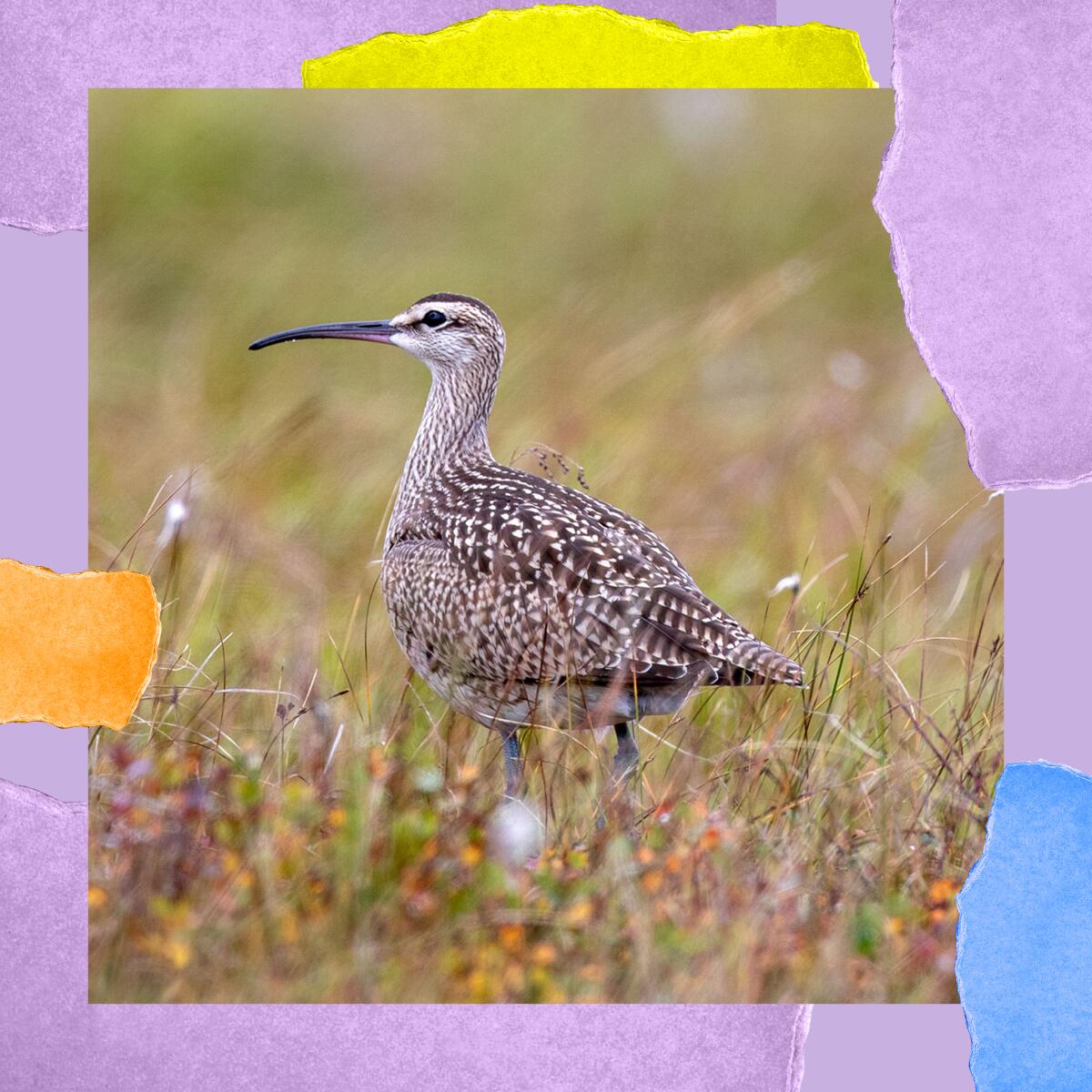
Cool stuff
Just in time for fall migration, the National Audubon Society (along with nine partner organizations) has just released the Bird Migration Explorer, an interactive digital platform (available in English and Spanish) that “visualizes the incredible journeys of migratory birds, how they connect us across the hemisphere, and the widespread challenges they face throughout their full annual cycle.” Users can scour migration data of 458 bird species in the U.S. and Canada, learning about the birds that visit their neighborhoods (such as my favorite migratory spot, Bear Divide) and the challenges they face on their journeys. It’s certainly a great tool for avid and amateur birders but also helps us preserve and protect our migratory avian friends. This one’s for the birds.
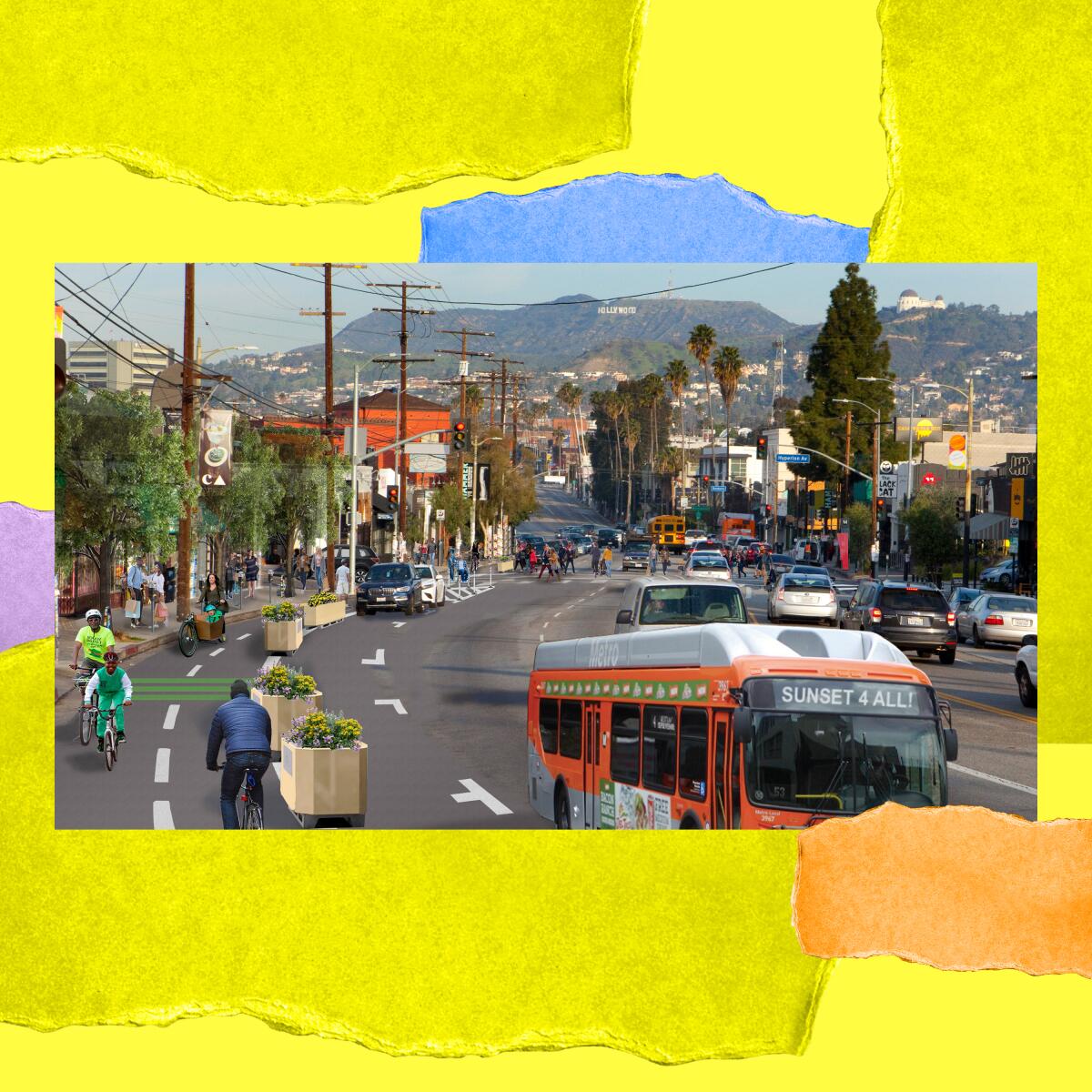
P.S.
Last month, I was excited to share the permanent ban of car traffic on Griffith Park Drive as a huge step in our city’s transit improvement and street safety. The efforts continued last week when Councilmember Mitch O’Farrell motioned to support the scope of improvements recommended by the Sunset4All initiative. Powered by the Los Angeles County Bicycle Coalition, the proposed plan would “create 3.2 miles of pedestrian improvements, protected bike lanes, more trees, beautification, pocket parks, safer access to schools, and transit upgrades” surrounding Sunset and Santa Monica boulevards from East Hollywood to Dodger Stadium. Let’s just hope the wheels keep spinning and more pedestrian projects like these come to fruition!
For more insider tips on Southern California’s beaches, trails and parks, check out past editions of The Wild. And to view this newsletter in your browser, click here.
Sign up for The Wild
We’ll help you find the best places to hike, bike and run, as well as the perfect silent spots for meditation and yoga.
You may occasionally receive promotional content from the Los Angeles Times.




